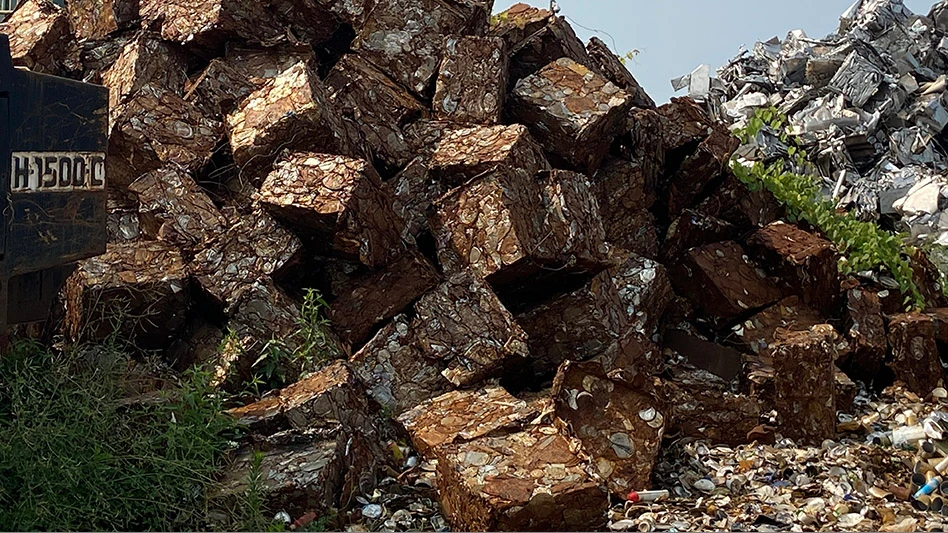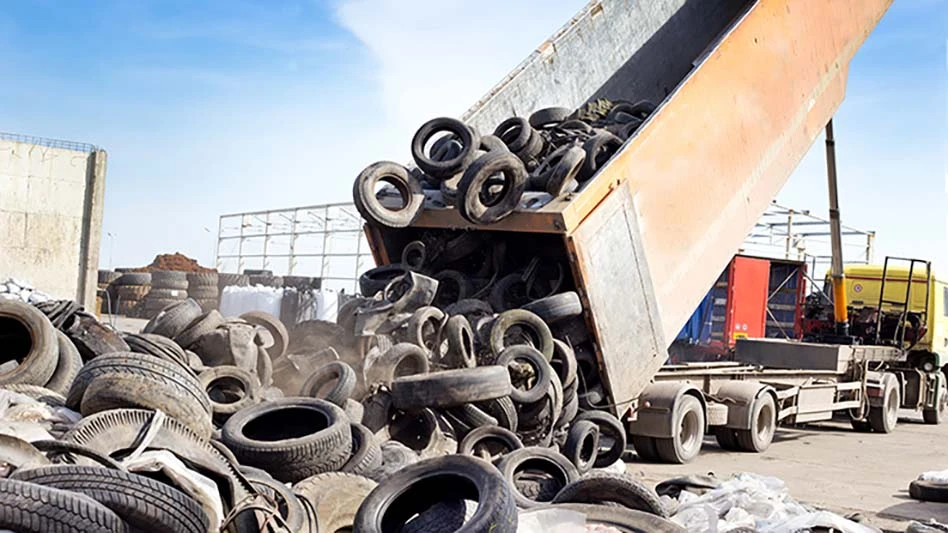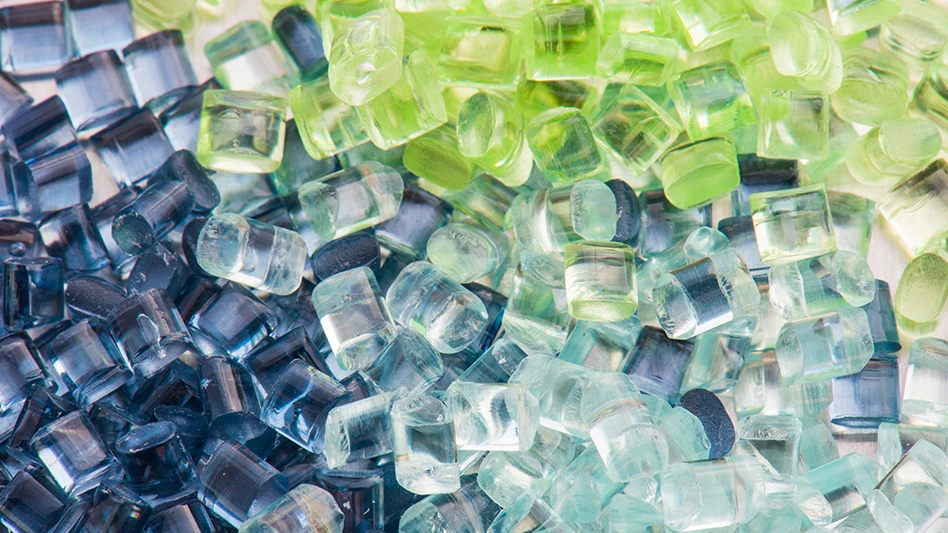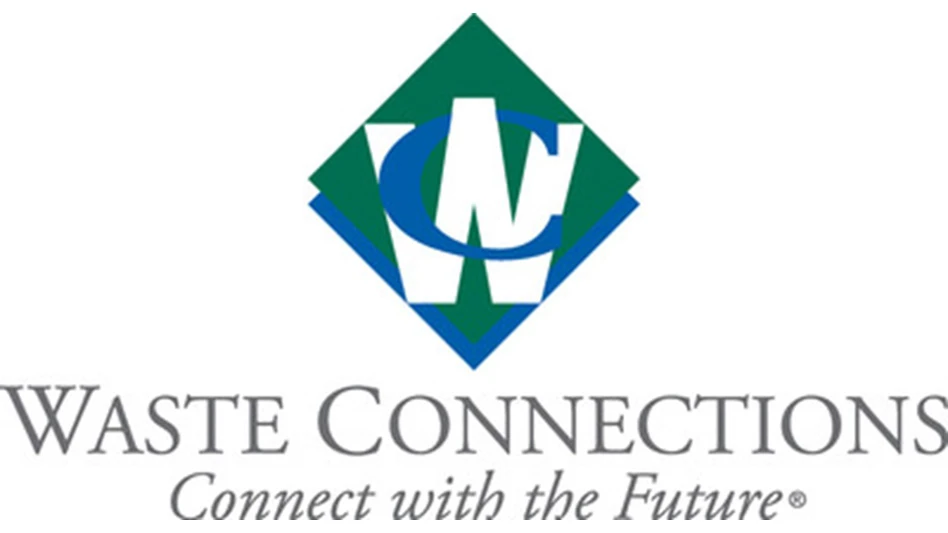Although there may never have been much truth to the claim some scrap consumers used to make that the term "quality scrap" is an oxymoron, it is certainly true that as steel minimills move into production of flat-rolled products, the need for high-quality scrap is stronger than ever.
In fact, the content and chemistry of ferrous scrap has become a critical competitive issue as steel mills tighten their relationships with favored suppliers who can meet their quality demands.
SCRAP FACTORS CHANGING
Steel mills have always needed scrap to have a low residual content in order for it to be usable. What has changed, say steel industry consultants, is the increased demand for scrap and the make-up of the scrap stream.
"The continuous casting process has greatly reduced the amount of internal mill scrap," says consultant Gerald Houck, Rockville, Md. "Back in time, a decent number of mills were self-sufficient in scrap." The efficiencies of the continuous casting process, which was widely adopted by the industry in the 1980s, created the demand for more outside scrap.
The electric arc furnace (EAF) process used in newly-constructed steel minimills has further changed the demand picture. "Theoretically, these mills are capable of using 100 percent scrap," says Houck. "For the most part, they find there isn’t enough scrap of the right chemistry available."
Bob Garvey, chairman and CEO of Birmingham Steel, Birmingham, Ala., says his company’s requirements have tightened as it produces higher grades of steel. "We were traditionally a 100-percent rebar producer," says Garvey. "As we’ve upgraded, it’s obvious that our quality requirements have gone up the scale."
North Star Steel, Minneapolis, has had a similar experience. "We do have more and more requirements regarding residuals," says Tony Hickl, North Star Steel’s technology director. The company operates a computer-aided scrap and virgin material inventory system that allows each mill manager to calculate the lowest-cost mix of materials that will still meet the requirements of any given melt.
Hickl notes that in addition to mill requirements actually tightening, the content of low-residual scrap is also used as a competitive selling edge by steel companies. "For certain types of steel, the need for low-residual scrap is not always well-grounded in fact," he says. "But there is a mentality that if low copper content is good, lower copper content must be even better. It creates a general market pressure."
The demand for low-residual scrap has grown at the same time that manufacturers of virtually everything make products that feature a multitude of materials configured or even blended together. "We’re in a period where we’re seeing scrap items that contain more materials attached," says consultant John Jacobson, Jacobson & Associates, Rochester, N.Y. "It has made the process of scrap collecting and processing more difficult," he adds.
Scrap processors can and do invest in any number of machines that can help in the separation process. In the case of auto shredders and accompanying separation equipment, the investments can be staggering and out of reach for some scrap processors.
CHEMISTRY MONITORING
Scrap processors who may have occasionally dozed off during their high school or college chemistry courses are now paying closer attention to the subject, as steel companies have almost universally assigned the role of overseeing scrap quality and purity to their suppliers.
"A lot of steel mills don’t view themselves as scrap processors or quality control monitors," says Jacobson. An increasing percentage of mills expect the processors to conduct the chemistry screenings of scrap shipments themselves, says Jacobson.
There is no universal definition for the term "quality scrap," but that certainly doesn’t mean all scrap is equal. "Some scrap is more generally useful than other scrap," says Houck. "For companies that are trying to produce certain steel products, it is necessary for them to use scrap that is low in residuals."
Screening out the residual items – which can include copper, nickel, chromium, tin, molybdenum and others – can require scrap companies to have a certain amount of chemistry expertise. Dr. Richard D. Burlingame, Cleveland, a consulting metallurgist to the steel industry, calls the screening of these "tramp elements" the number one quality consideration for scrap processors and mill operators.
Mills are also demanding consistency in scrap shipments, says Burlingame. If a mill receives ten railcar loads of scrap, they want "narrow limits of fluctuation" in content, density, size of scrap pieces and in melting yield. "The scrap dealer has to send scrap that is clean," he says.
Burlingame adds that a spectrometer is a scrap processor’s key ally in monitoring outgoing shipments. "Processors don’t need highly-trained engineers," he remarks. "They need good, serious technicians who can operate a spectrometer. Dealers who don’t want to use a spectrometer, in the long run, are not going to last."
SCRAP ALLIANCES
The issue of scrap quality is one that has the potential to drive a wedge between a mill and a scrap supplier. While that doubtless has happened, in many cases the bond between mill and scrap supplier has actually strengthened.
Steel companies have entered into scrap supply arrangements ranging from establishing their own scrap operations or purchasing existing scrap firms to forming a close working partnership with a preferred independent scrap supplier. "I think the increased demand for quality scrap has enhanced the desire for partnerships," says Jacobson. Many of the new partnerships involve the establishment of a scrap processing facility on-site at the mill or on a lot directly adjacent to the mill.
Ownership and operation of scrap processing facilities by steel companies has also become more common. "I think it’s a wise strategy," says Jacobson. "They look at it as an important part of their long-term strategies." Jacobson names Birmingham Steel; North Star Steel; and Schnitzer Steel, Portland, Ore., as companies that have positioned themselves to be partly or fully responsible for their own scrap supply and quality control.
The change in the relationship has been noticeable for metallurgist Burlingame, who has been involved in the industry for 45 years. "What has changed is that for a long time the scrap industry and the steel industry had a very formal – or even adversarial – relationship," says Burlingame, who says both sides needed to make accommodations to change the nature of the relationship.
Steel executives used to have little interest in getting to know their scrap suppliers, he notes, and in the past would probably not have been likely to listen to any process improvement suggestions from them. "For their part, only in recent years have the scrap people undertaken to really learn about steelmaking and the furnace operation and process. Today, an intelligent scrap operator can realistically hope for a more respectful hearing from the steel industry. There’s much more cooperation going on today than there was in the past."
Even though his company has moved to bring scrap processing in-house, Birmingham Steel’s Garvey believes the last few years have seen an overall improvement in scrap industry-steel industry relations. "I think the relationship has improved over the last three or four years, though you still have some uncertainty and even animosity," says Garvey. "Just the communicating and discussing have improved the climate."
ALTERNATIVE MATERIALS
The fact that EAF minimills are able to use 100 percent scrap metal as their primary raw material has been a boon to the scrap industry. But just because minimills can use 100 percent scrap does not mean that they necessarily do.
Scrap substitutes such as direct-reduced iron (DRI) and pig iron have become increasingly popular with some mill operators, though industry participants sometimes have differing views as to what percentage of the market these materials can capture.
Georgetown Steel, a subsidiary of GS Industries, Charlotte, N.C., has made a commitment to using DRI at the two plants it operates. The company’s Georgetown, S.C., plant is currently using 50 percent DRI and 50 percent scrap while its Kansas City, Mo., plant is using 100 percent scrap but will soon be switching to the 50-50 mix, according to Bob Lightner, director of purchasing and materials for GS Industries.
"The DRI is low residual and can make high-quality products," says Lightner. The company is in partnership with Birmingham Steel in the production of the DRI used by its plants. "We see scrap getting more expensive and less available," says Lightner, who also says the availability of DRI on the market helps keep ferrous scrap costs in check.
"Certainly at the moment, we think that’s the best strategy," Birmingham’s Garvey says of the joint DRI facility, which is scheduled to go online in Convent, La., in January. Birmingham Steel has been processing its own scrap for some time, and Garvey says doing the same with DRI also makes sense since outside DRI supply lines are "tenuous at best" in his opinion.
North Star Steel has traditionally used pig iron to supplement scrap at the eight mills it operates in the U.S. The company recently signed an agreement with CAEMI, Rio de Janeiro, Brazil, to install a Technored furnace at North Star’s St. Paul, Minn., minimill. According to Hickl, the Technored process will enable North Star to melt iron pellets and feed molten material directly into its electric arc furnace. The steelmaker’s license with CAEMI gives it an option to have Technored furnaces installed at all of its plants.
North Star favors the Technored process over the use of DRI for several reasons, says Hickl. "We see a real advantage in using molten material as opposed to DRI in the furnace, both in terms of saving energy and instantly adding to the capacity of our mills," he notes. According to Hickl, a Technored furnace adds to steel making capacity by saving time at the initial melt shop stage. He also cites energy-saving figures of up to 50 percent based on similar installations in Europe and Latin America.
Hickl notes that the virgin iron capacity added by the new process will replace its existing pig iron supply, and will not change North Star’s need for scrap. Scrap still accounts for 75 percent or more of what is melted at each North Star mill. Nor would North Star be precluded from using DRI if it makes sense, says Hickl. "There is a lot of DRI capacity coming online, so we’ll buy it opportunistically."
Metallurgist Burlingame believes the new Technored furnaces may indeed prove to be a wise investment. "If you can come in with these mini-smelters and make hot metal that way, the scrap people could get a little bit nervous," says Burlingame. "But market forces would pull the price of scrap down until it remains of interest to steel mills. Scrap suppliers don’t have anything to worry about."
He believes that while the new mini-smelter process may provide a material that is preferable to DRI, neither scrap alternative is a threat to scrap markets at a time when global demand for steel is very high. DRI, he points out, has been available in commercial quantities for over 30 years, but cannot seem to surpass the 5 percent mark in global steel feedstock market share.
"The opportunities are great for scrap processors," says Burlingame. "Worldwide, we’re using more steel than ever. But the pressure will be on scrap dealers to maintain the quality control, or they’re going to face losing ground to these pure elements [such as DRI and pig iron]."
Communication between processors and mills, proper chemical analysis, and the accurate representation of scrap shipments were cited by Burlingame and others as keys to the quality side of the equation for the scrap processing industry.
COOPERATION WILL CONTINUE
Whether mill scrap requirements will change dramatically in the future was a prediction most industry participants declined to make. "I don’t think anyone has a real clear picture of how it’s going to shake out," says North Star’s Hickl.
Adding to the complexity is another industry axiom: scrap is ultimately a local business. "The markets are different and the requirements of each melt shop are so different," says Hickl. "There’s no one standard; scrap is such a local business." Hickl notes that not only is the scrap picture different in the varying regions North Star operates, but even in markets within a given region.
For example, quality scrap is far easier to obtain in Monroe, Mich., than Beaumont, Texas, says Hickl. Much of the scrap for the company’s Texas plant is shipped across the Gulf of Mexico from Tampa, Florida, where the North Star Recycling division operates a processing yard. But even within the Great Lakes region, scrap quality, pricing and availability can differ greatly between Monroe and Delta, Ohio, or Youngstown, Ohio, even though all three cities are within a 250-mile radius.
One matter industry participants do agree upon is that it is in the industry’s best interest to work together to treat the quality of steel as an imperative. There are few if any markets left where steel as a material is not competing with one or more commodities for the contracts of manufacturers.
"We’re fighting aluminum and its alloys, and the polymers and various forms of plastic for market share on any number of fronts," says Burlin-game. "Mills, buyers and scrap suppliers need to form a united front to keep an eye on quality."
The author is managing editor of Recycling Today.

Explore the November 1997 Issue
Check out more from this issue and find your next story to read.
Latest from Recycling Today
- Lautenbach Recycling names business development manager
- Sebright Products partners with German waste management equipment company
- WasteExpo transitions to biennial format for enhanced experiences
- Study highlights progress, challenges in meeting PCR goals for packaging
- Washington legislature passes EPR bill
- PureCycle makes progress on use of PureFive resin in film trials
- New copper alloy achieves unprecedented high-temperature performance
- Gränges boosts profits and sales volume in Q1 2025






